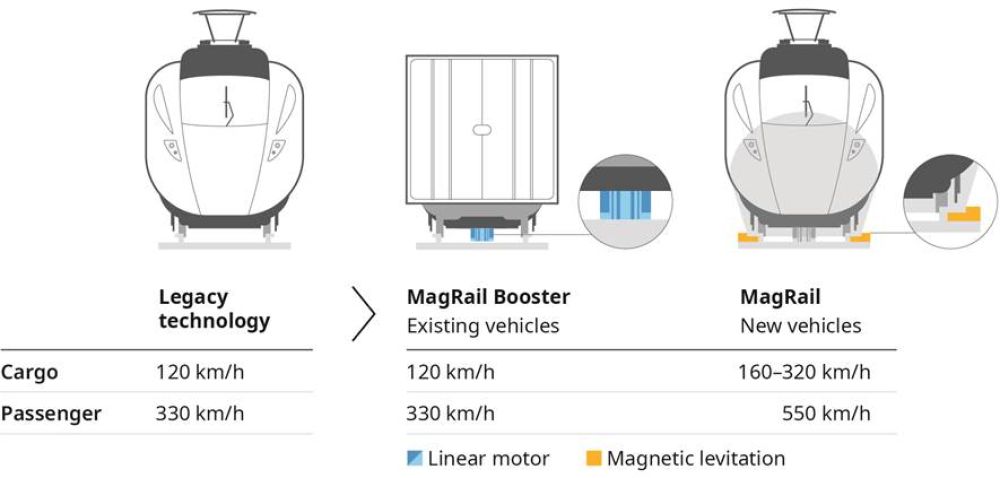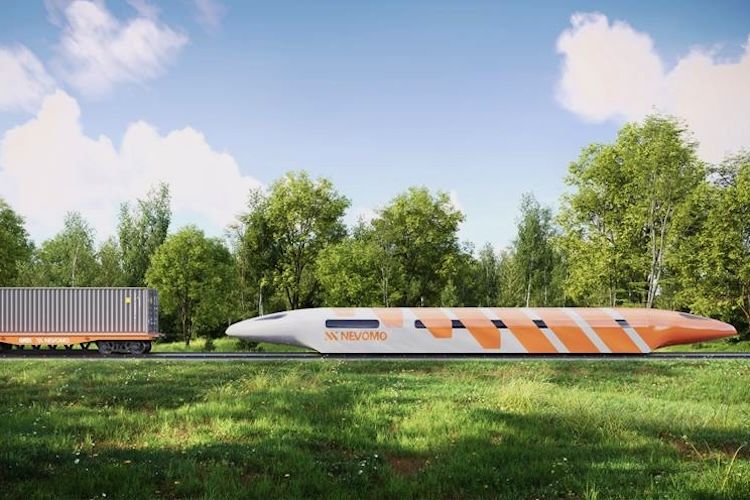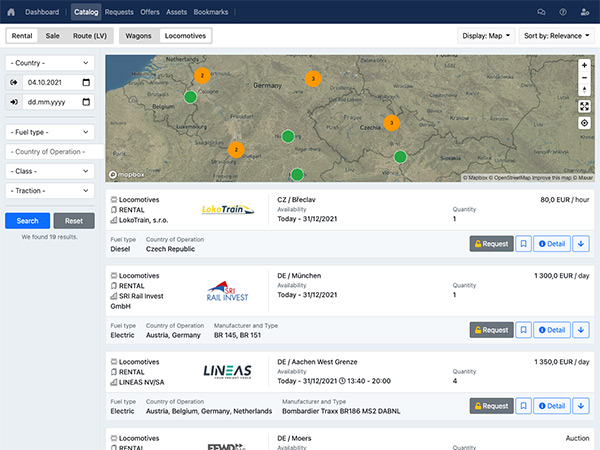A new report by global management consultancy Oliver Wyman, entitled "Elevating rail in Europe: technology upgrades for greener transport", highlights the potential of advanced technologies such as passive magnetic levitation (MagRail) to transform the continent's long-distance transport network towards greater efficiency and carbon neutrality.
Nevomo's MagRail technology is at the forefront of this wave of innovation. Using passive magnetic levitation and linear propulsion, MagRail enables trains to float and travel at speeds of up to 550 km/h on existing railway tracks. Inspired by hyperloop concepts, this technology promises a new era for high-speed rail by enabling electrified operations in non-electrified areas such as ports and terminals, overcoming current infrastructure limitations.
The Oliver Wyman report comes at a critical time as the European Union aims to reduce CO2 emissions by 55% by 2050, with the transport sector expected to reduce emissions by more than 70%. While rail is a more sustainable option, it faces challenges such as infrastructure constraints that limit capacity on key routes. MagRail offers a solution by increasing the efficiency and capacity of existing lines without the need for extensive new construction, thus supporting the EU's green transport objectives.
According to the report, the integration of MagRail technology could significantly increase network capacity and improve freight dynamics, allowing automatic train operation and higher load limits without human error. This would not only help reduce CO2 emissions but also position rail as a more attractive mode of transport in terms of speed, efficiency, and environmental impact.

The report highlights the cost-effectiveness of MagRail, contrasting the estimated €20 billion required to upgrade the North-South corridor with passive magnetic levitation with the €60 billion required for new conventional high-speed rail infrastructure to achieve similar capacity increases. This underlines MagRail's potential for medium-term, cost-controlled upgrades using existing rail infrastructure.
“Rail in Europe is crucial for the European Green Deal, but capacity is a challenge. Building new lines takes time and land is limited. Faster acceleration and higher train speeds are needed to enhance capacity. Technologies that can be applied to existing rail infrastructure, like passive maglev, would allow for medium-term effects and cost control while leveraging current infrastructure,” said Joris D'Incà, Partner at Oliver Wyman.

